Quiet Conversations.
The project, built in Rafaela, Argentina, is located in the garden of an existing house with an open space of approximately 2000m2. The project aspires to conceive a new working space for an artist with independent access from the street. The “Atelier Workshop” is arranged as a device capable of capturing the most favorable lighting while protecting from solar radiation, this way ensuring optimal conditions for work.
The building is autonomous and independent, separated from the house and located on the east end of the lot, but at the same time having a silent dialogue silently with it. At times rough, filled with emptiness and with the skin stuck to its bones. With reduced need of maintenance, it also seeks to be precise. To do just enough.
As a new piece, the project reconfigures the garden in an effort of formal synthesis of pure intellectual abstraction. The project is informed by the site, collecting existing fragments to turn them into something else. It appropriates the existing house’s roof slope, gaining height among the treetops. It incorporates views of the sky and the natural landscape from below and brings them inside. Expressing itself as hammered stone, it resembles the existing house’s external materiality.
Heavy outside, the construction is expressed as an artificial stone. A kind of primitive reinforced concrete angular piece with a coarse-grained texture on all its surfaces. The roof and walls have a rough finish that shows the passage of time, while manifesting the effects of different climates and tones of the surroundings.
It opens to the north, relating with a small courtyard space enclosed by a second volume, incorporating the service program. Through this action, the project aims to scale and enclose the workshop’s exterior space within the immensity of the garden. It is defined only by the ground materiality and the service wall as a vertical limit. This way, a small set of interior-exterior spaces is built, an outdoor stone courtyard within the large green garden.
As a result, the interior space doubles its surface, expanding towards the outdoor space, considering that activities such as painting, drawing, sculpting and exhibiting can be developed continuously both in the interior space and in its immediate exterior courtyard.
It is in the section where the space takes proportion and scale. It is put in tension, bringing natural light into the working interior space. The opposing openings allow the cross circulation of air, emphasizes the diagonal tensions and magnifies the space height. A system of low, sliding glass doors connects the interior with the immediate courtyard. At the same time, the high windows are responsible for illuminating the space evenly, gradually making the light slide down the sloping roof into the main room.
On the inside, the building is materialized in wood. This way, the interior atmosphere is defined by the contrast of a rough concrete exterior and the wooden interior with its unique scent. The result is a single space capable of becoming multiple spaces. Open, adaptable, and triggering new scenarios linked to its inhabitant needs. With a regular floor plan geometry, it frees up the entire void to allow for multiple planned activities, which are supported by a storage area that is incorporated into the thickness of one of its walls.
The formal synthesis is enhanced by material simplicity. The whole project is resolved with two materials and through different material finishes. Using elementary technology, the proposal is reduced to a few operations. It integrates the trees, manipulates light, air and materials in order to build a place to think, paint and work. A space that allows the extension of imagination and memory.
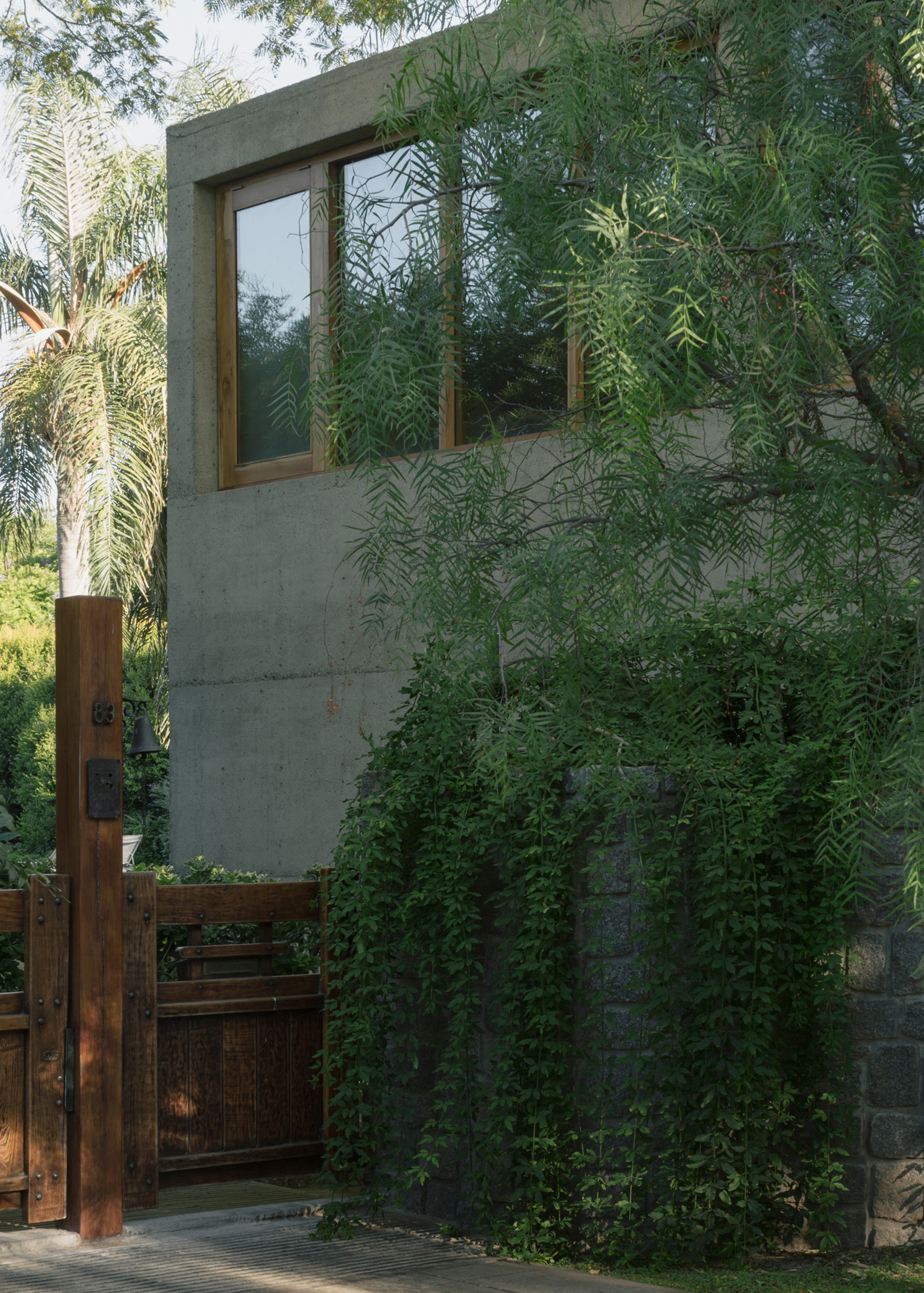
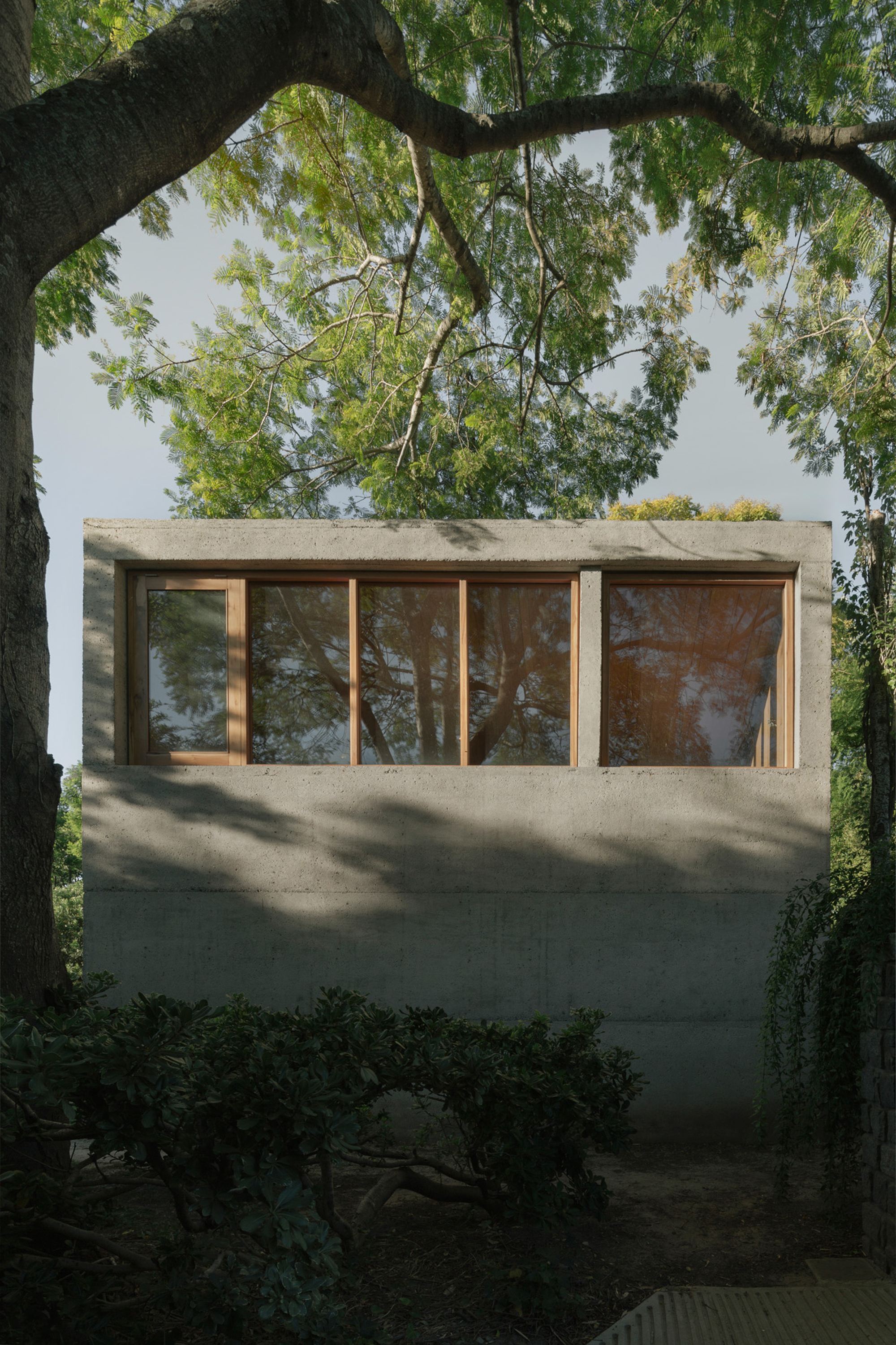
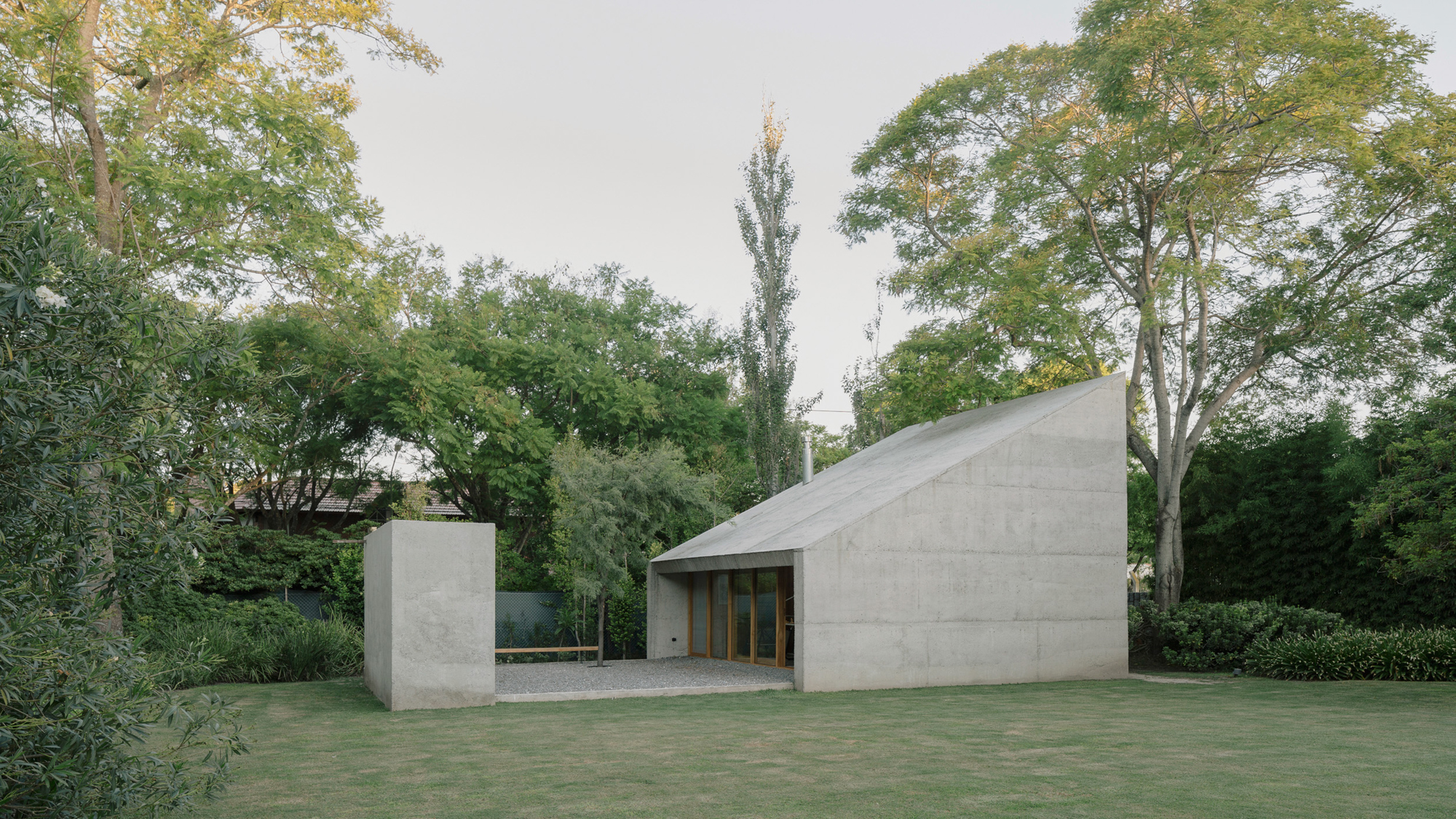
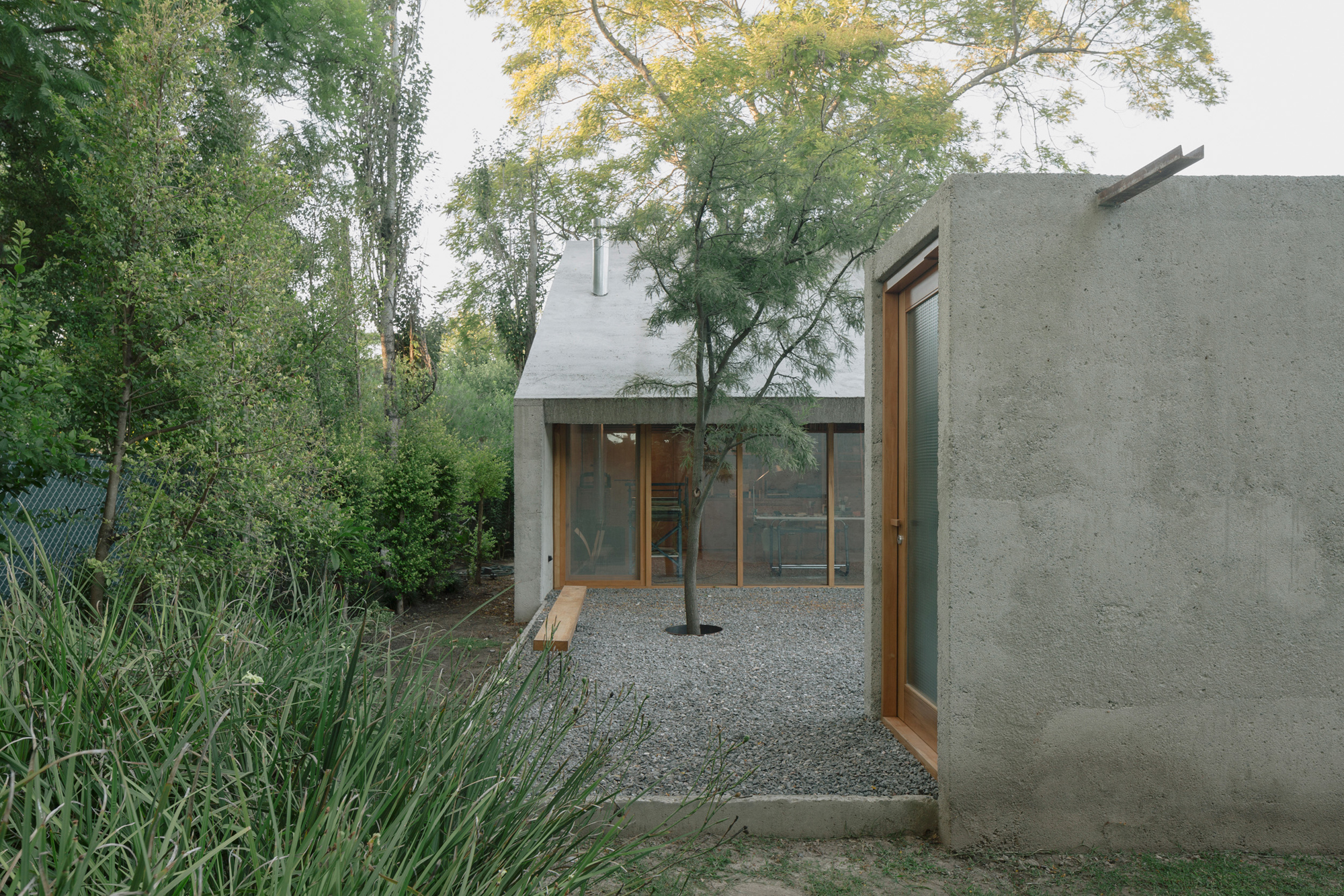


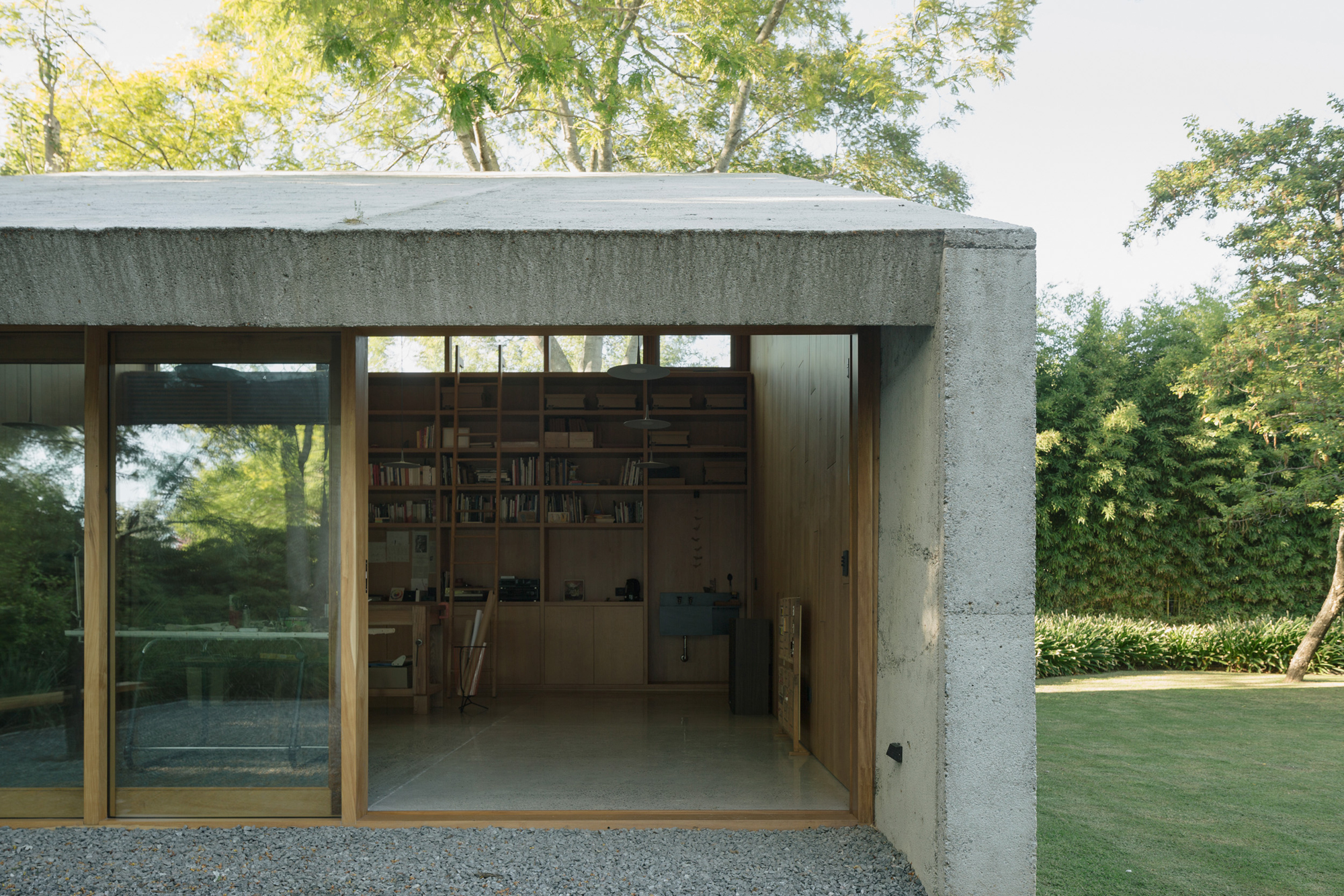

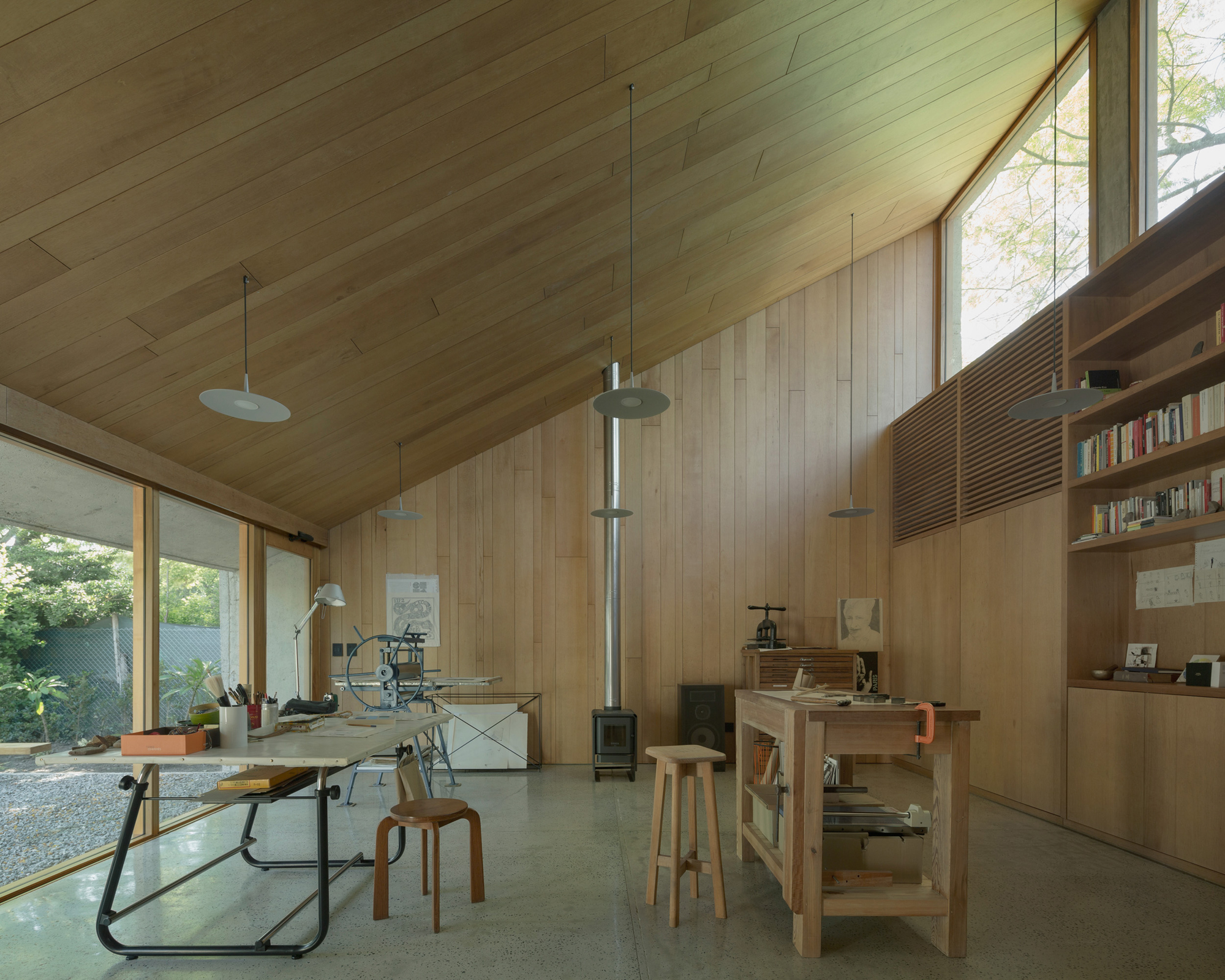

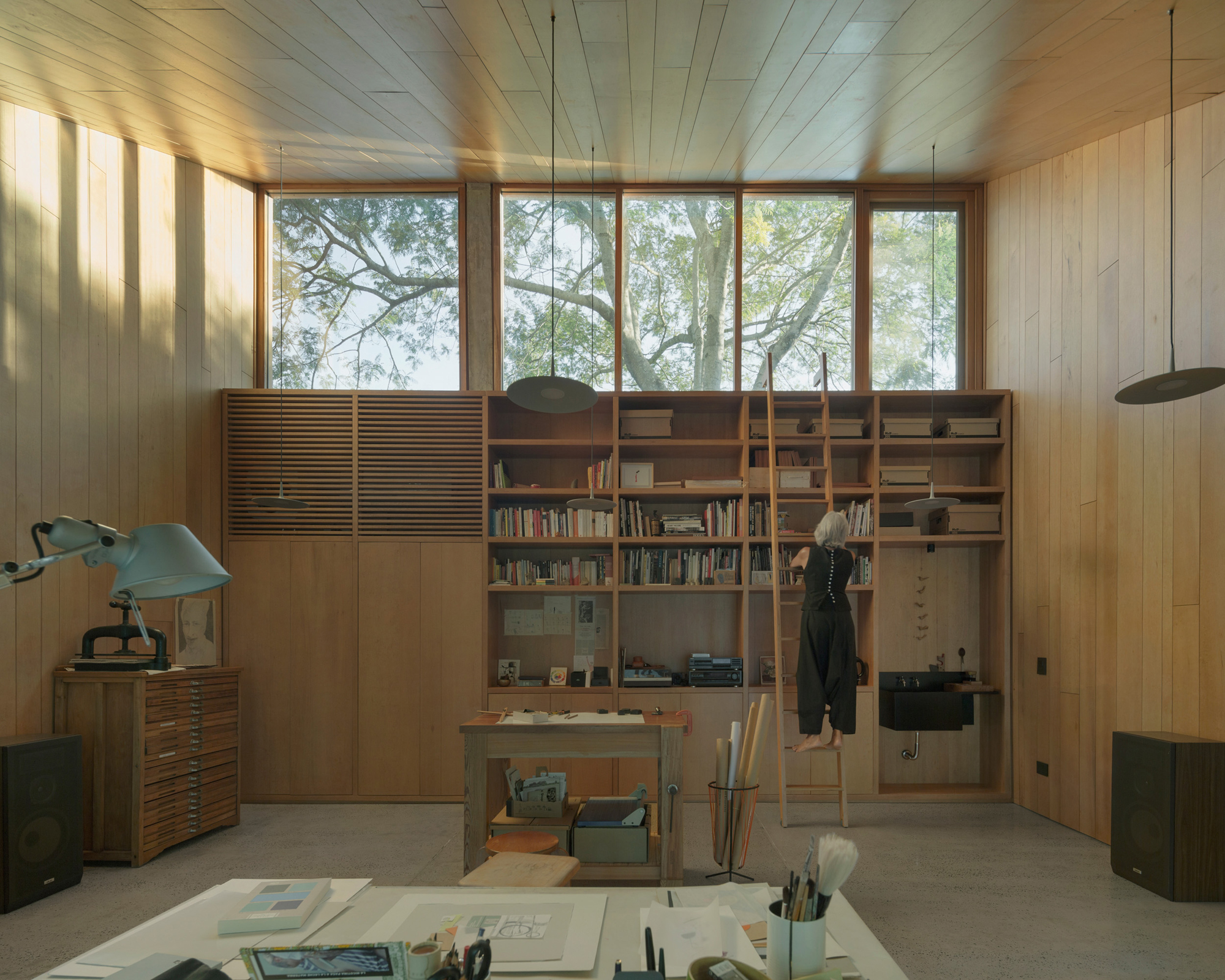
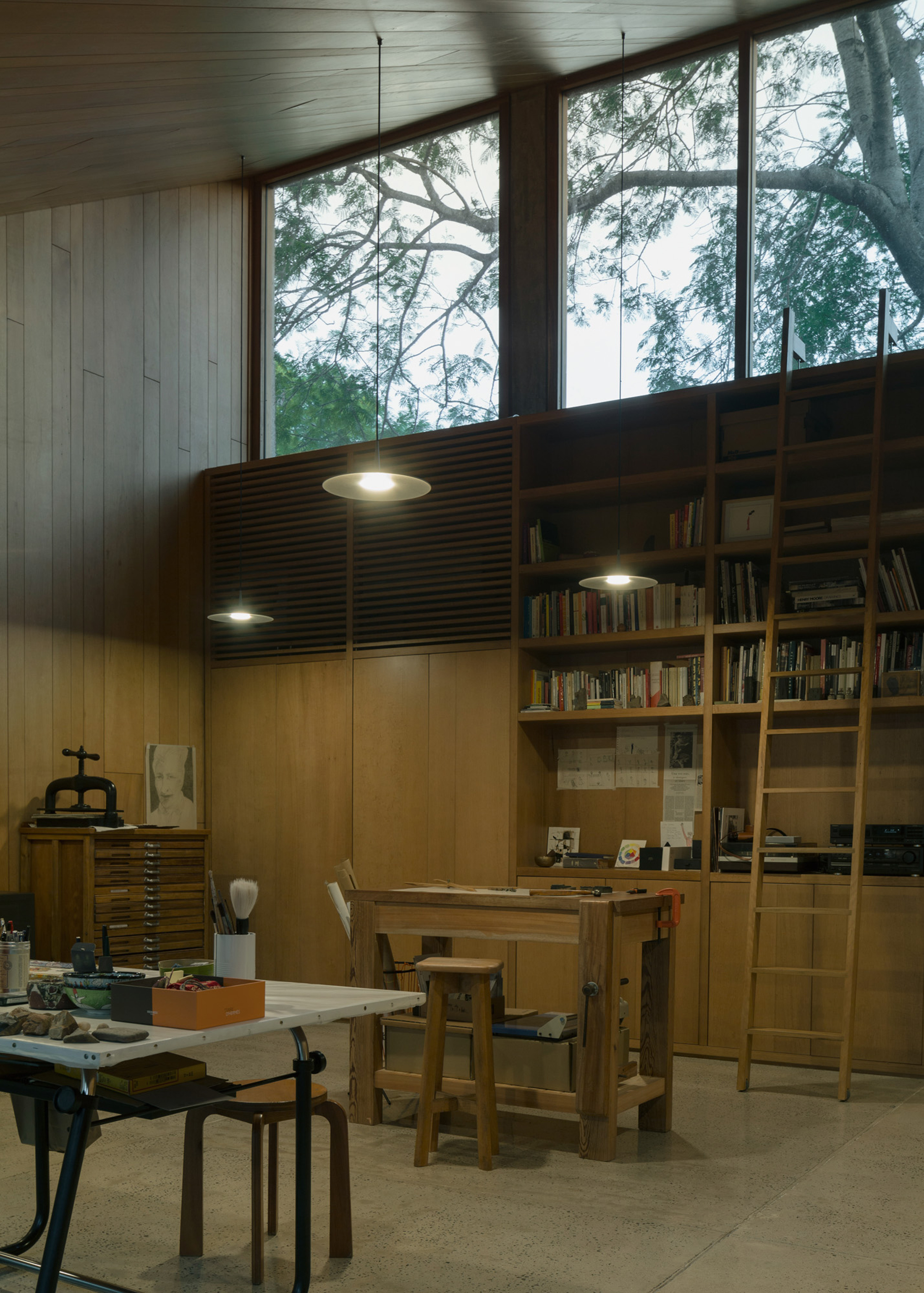
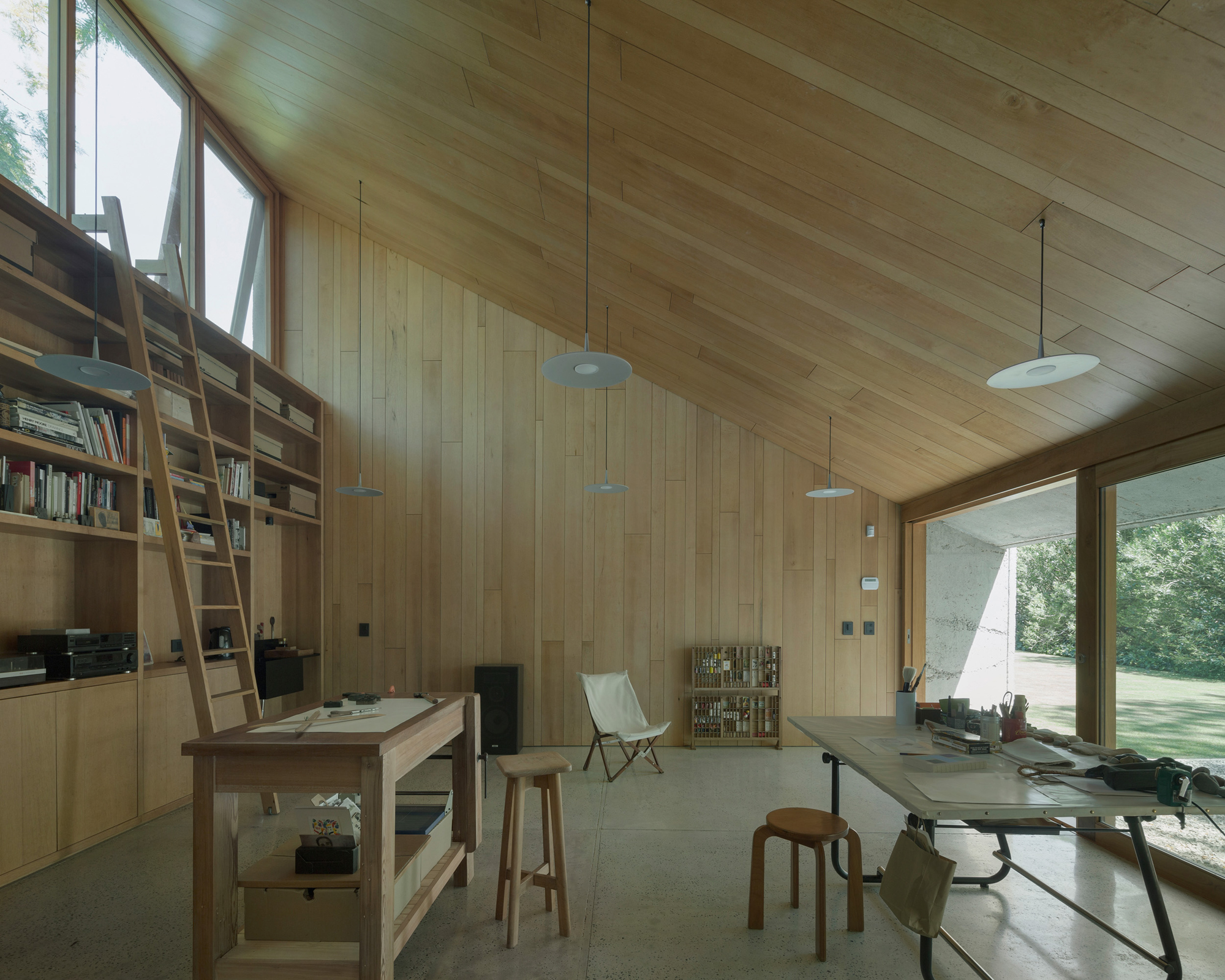

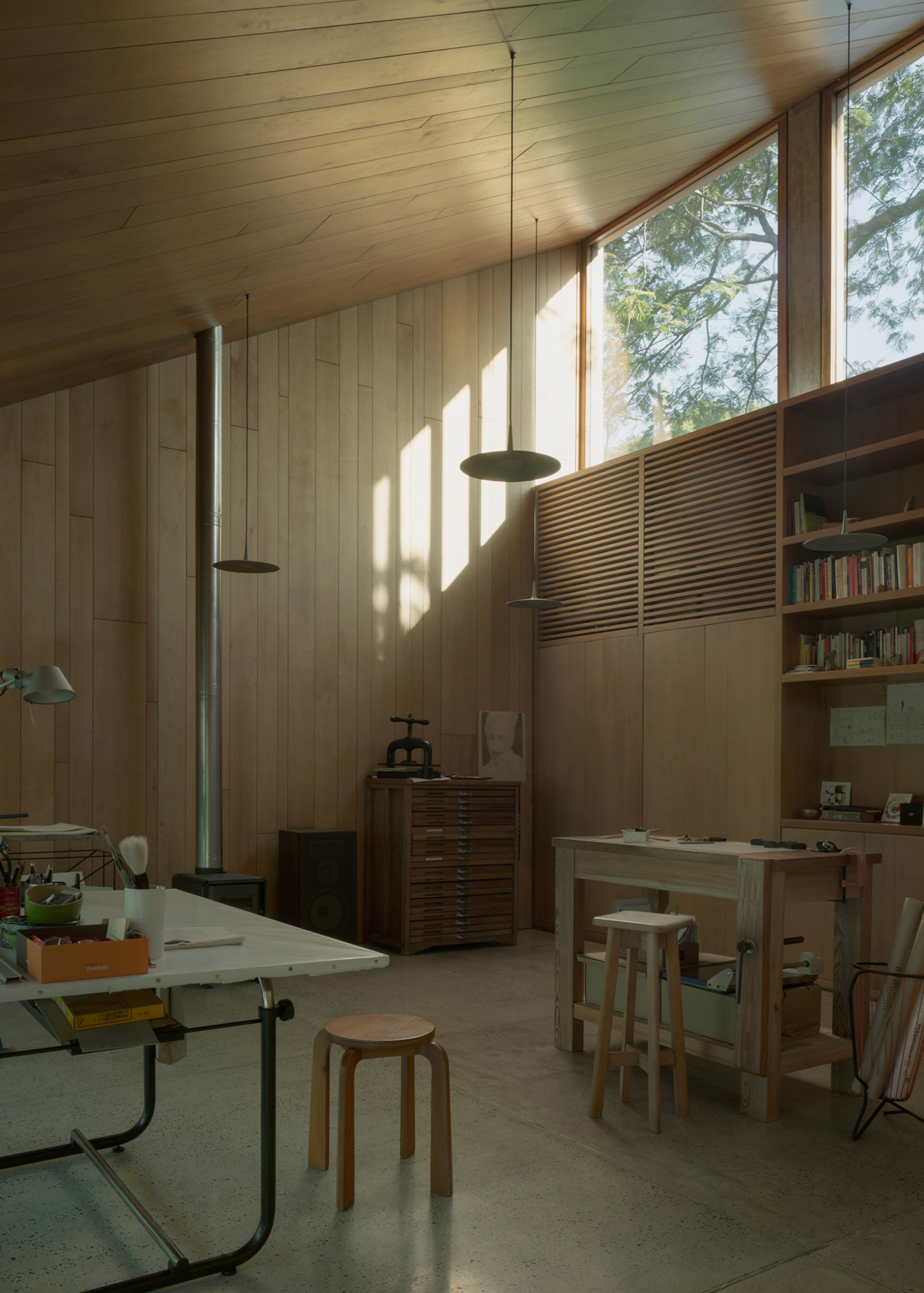
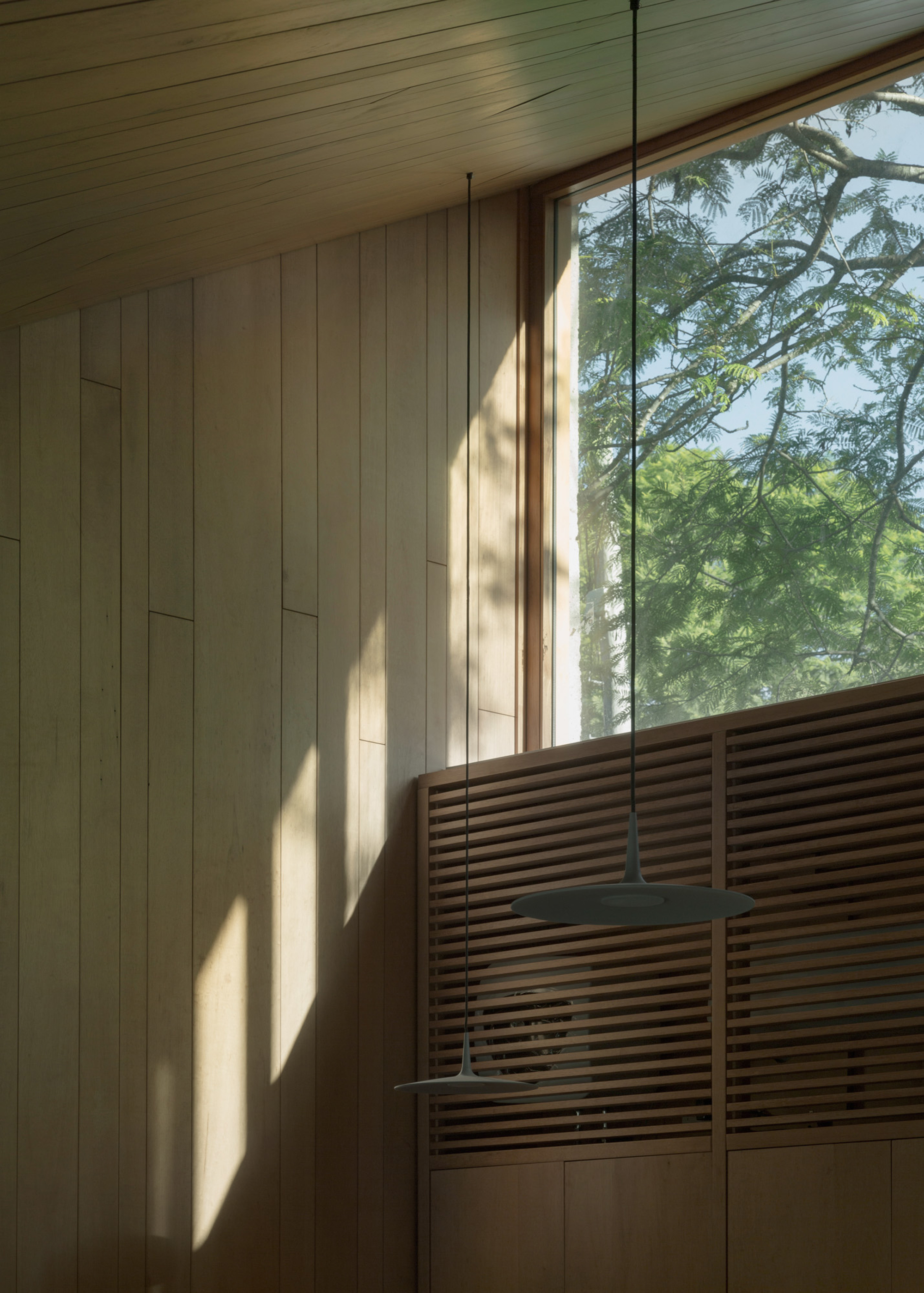

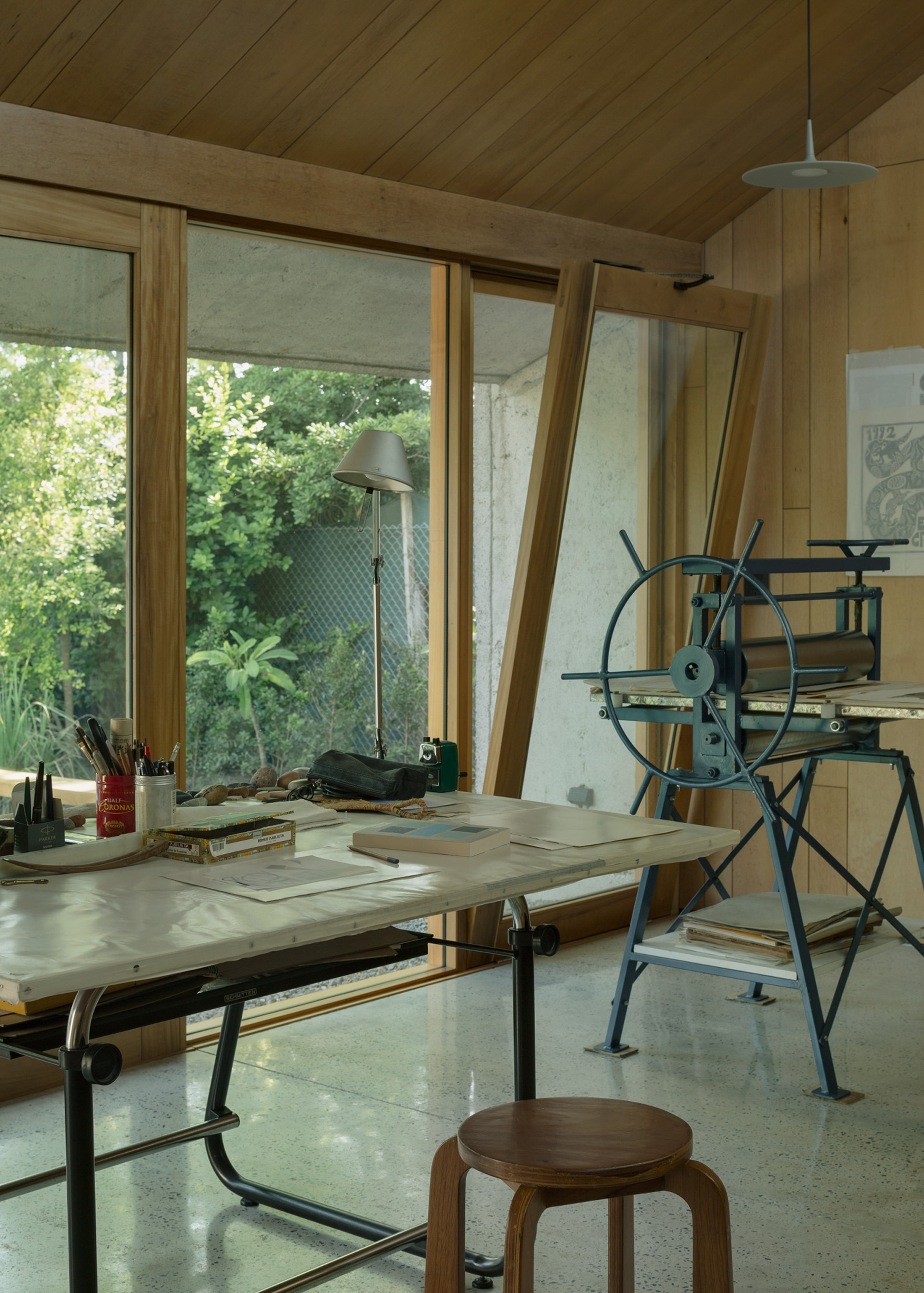
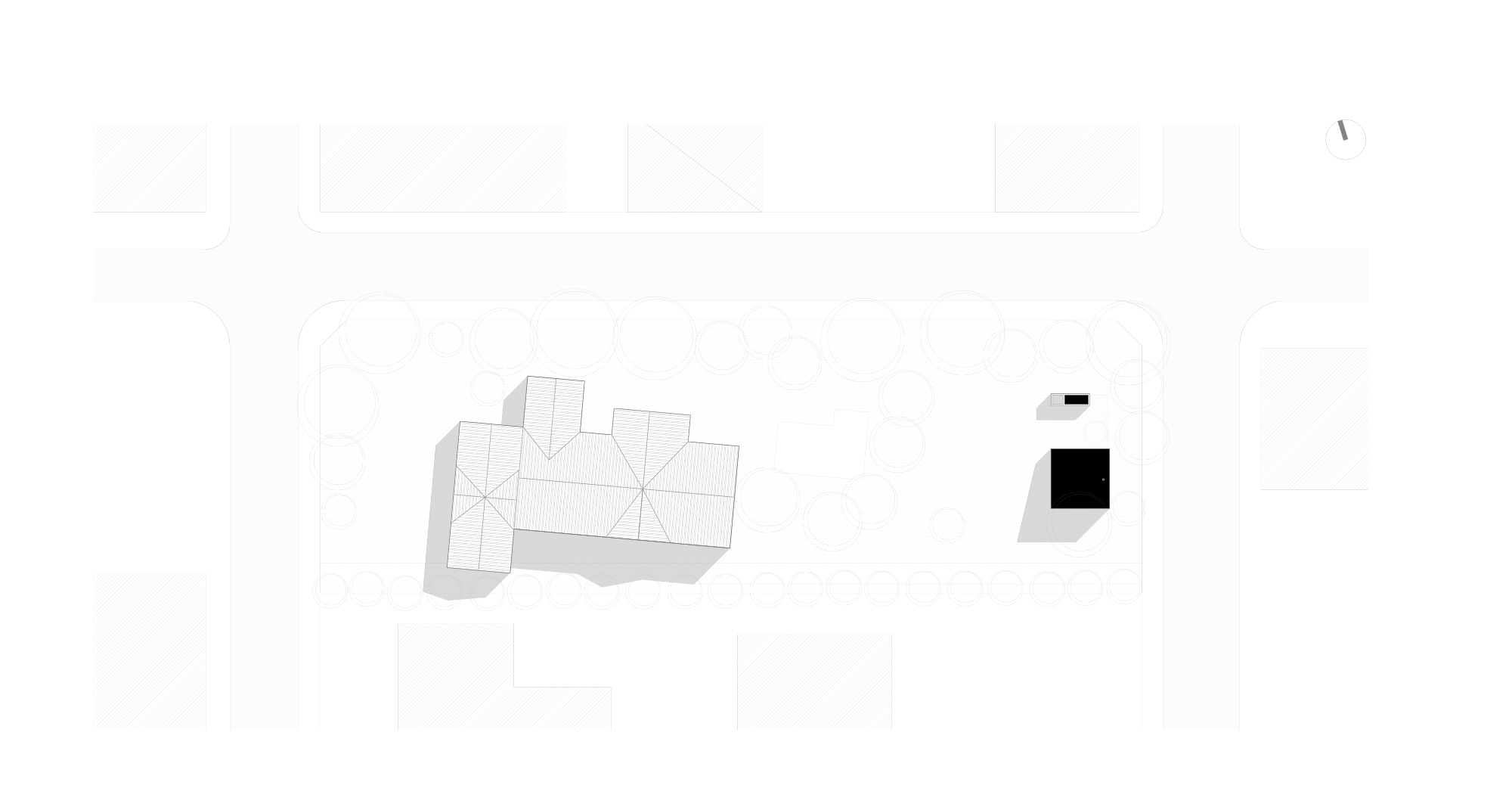
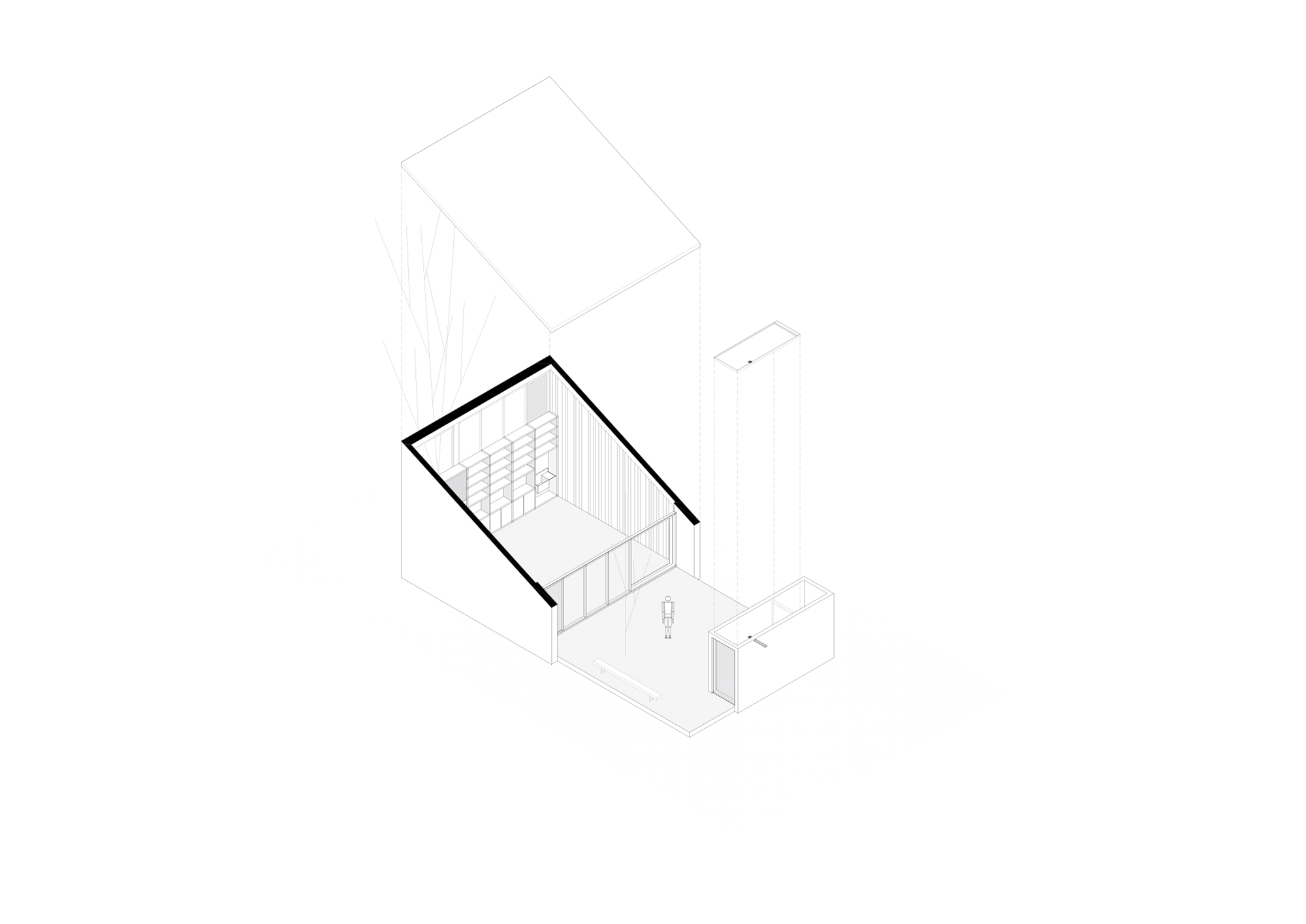
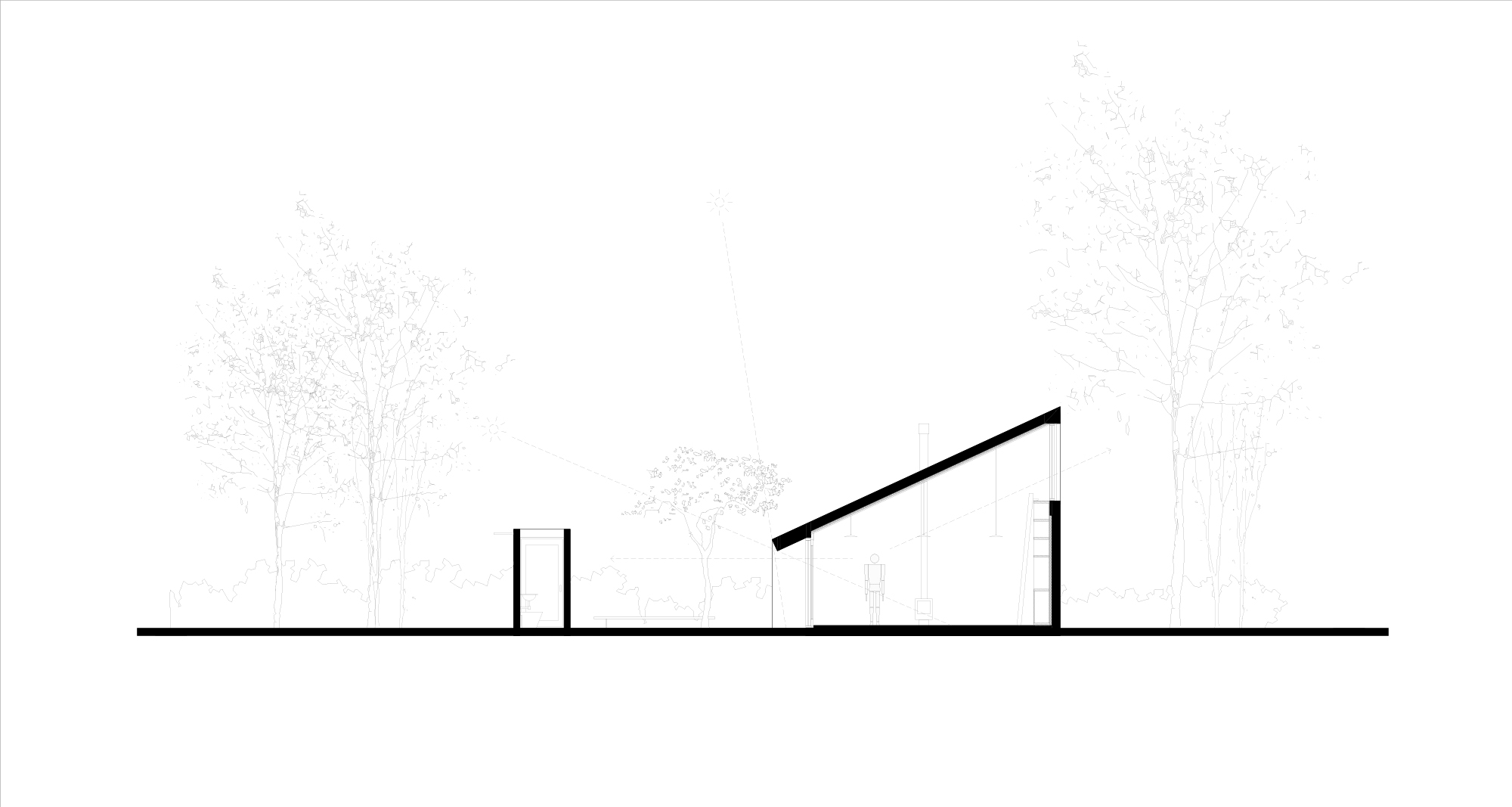
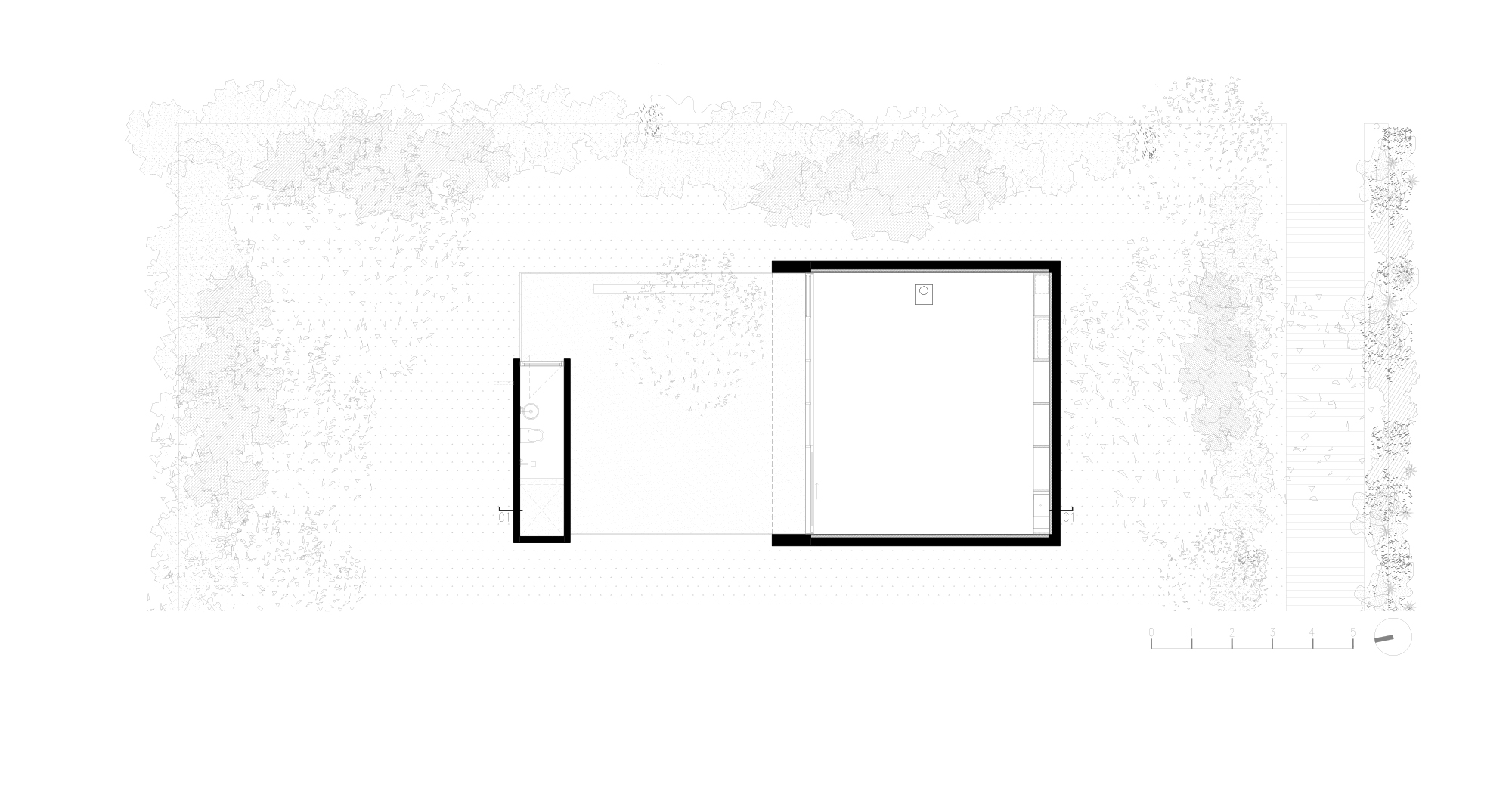
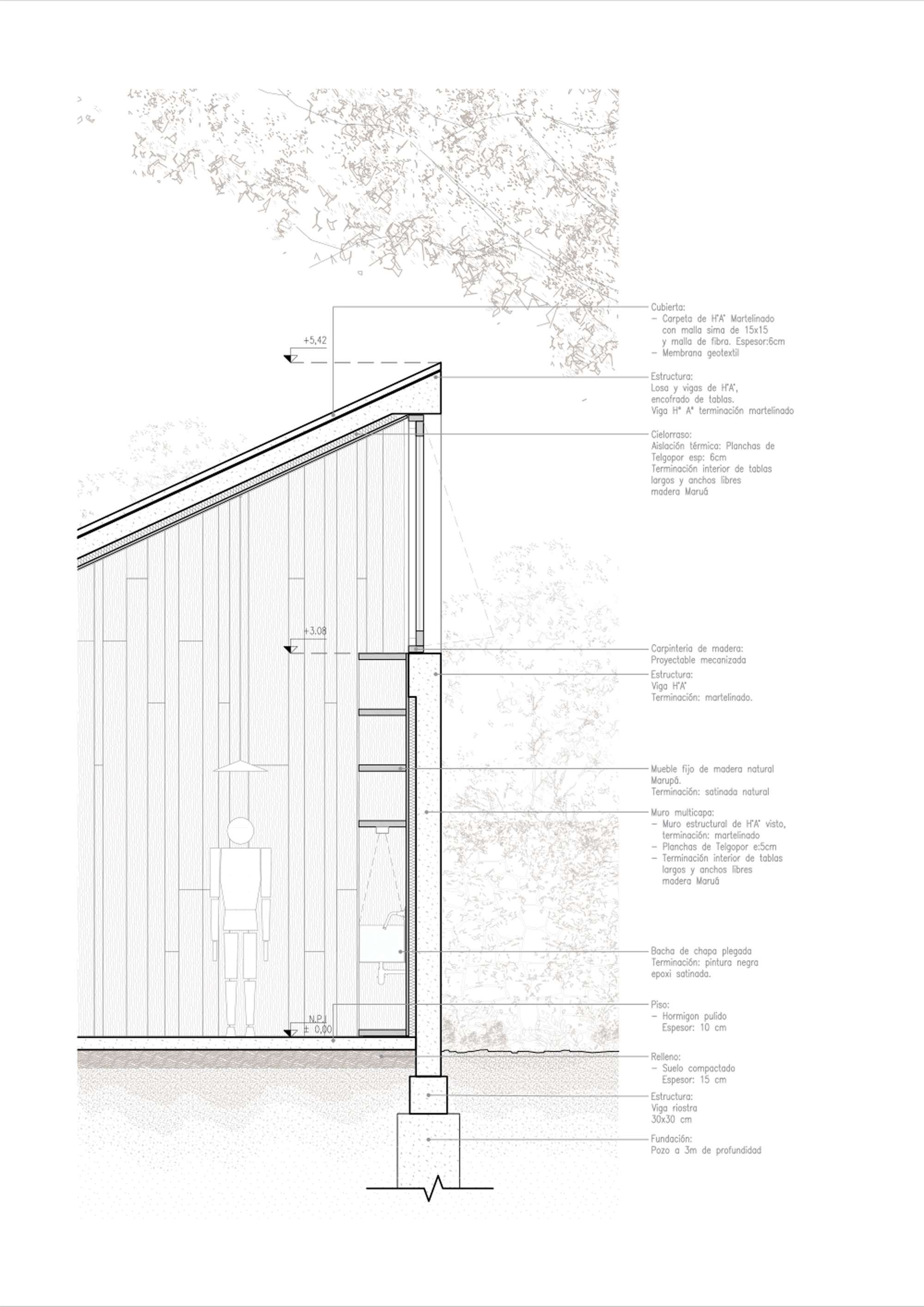





2 Comments
Is the north wrongly positioned? Either that or the sun rays in the section are then wrong.
It’s in the Southern Hemisphere